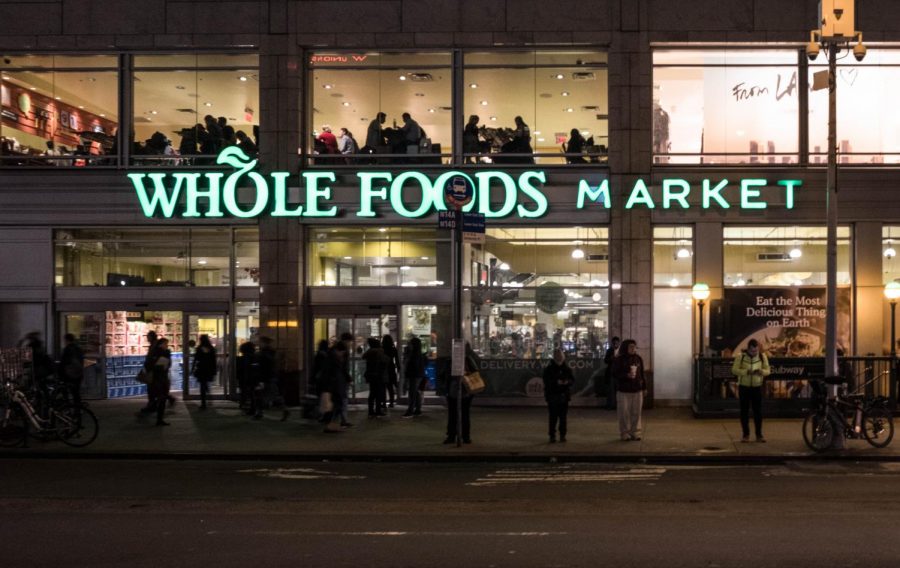Groceries in the Digital Age
Whole Foods Market on Union Square is a traditional grocery store that offers the option to shop for groceries online through Amazon Prime Now.
April 9, 2018
Back home, I loved slowly perusing the aisles of my local grocery store, imagining all the ridiculous and mouthwatering things I could eat or create. However, in New York, this love isn’t quite as common. Whether it’s the notorious line at the Union Square Trader Joe’s that wraps around the entire store to meet you at the entrance, the exhaustion of carrying three grocery bags or the heavily inflated prices of food in crowded stores, grocery shopping in . For many New Yorkers, the bodega on the corner or food delivery services, such as Seamless or Postmates, serves them well enough to minimize trips to Whole Foods. And with the opening of Amazon’s new cashier-less grocery store, many are even questioning the future of physical food markets.
In today’s technology-driven society, the masses demand things fast, easily and cheap — not a simple task for stores to achieve since the food industry has so many moving parts. This complicated chain has caused a growing interest in grocery delivery services such as Amazon’s Prime Pantry or Instacart. With these services, patrons are able to select their desired items, add them to their cart and have their fresh produce, cheese and ice cream delivered without any of it going bad.
However, could this be negatively affecting people in low-income households? If grocery stores begin to close their doors because of the competition from AmazonFresh, people who are already struggling to pay for groceries would not be able to afford the additional delivery fee and could be stuck getting groceries from a corner store or 7-Eleven. The epidemic of food deserts, usually low-income neighborhoods in parts of the country devoid of fresh produce, has been relevant in politics over the past few years because of Michelle Obama’s “Let’s Move” campaign. The popularity of grocery delivery services could possibly end up exacerbating this issue. But are enough people using the service to put regular grocery stores out of business?
LS sophomore Corrine Tumpson regularly uses Instacart and AmazonFresh and finds it convenient.
“Yeah it’s like groceries right on your computer,” Tumpson said. “You can order cereal and milk and that’s cool. It just saves so much time.”
However, many students opt for cheaper choices, such as Trader Joe’s. Tisch sophomore Jack Petersen buys his groceries weekly in person.
“I buy a lot of vegetables and I like to pick them out myself so I get the best I can,” Petersen said. “I just like being able to choose. Also I don’t want to pay a delivery fee.”
Most people prefer brick-and-mortar stores for two reasons. They like being able to pick out things for themselves, and they don’t want to waste money to paying for delivery. Even people who use AmazonFresh find themselves venturing to the grocery store to pick out their own produce.
“It’s different from when you’re choosing your own apples,” Tumpson said.
While Amazon may be making the process of grocery shopping easier, culturally, most people tend to solely utilize brick-and-mortar stores over online options, if not a combination of the two. While Amazon provides great pantry basics, most people prefer the ability to choose for themselves, ensuring that grocery stores won’t be going anywhere — at least for the time being.

























































































































































